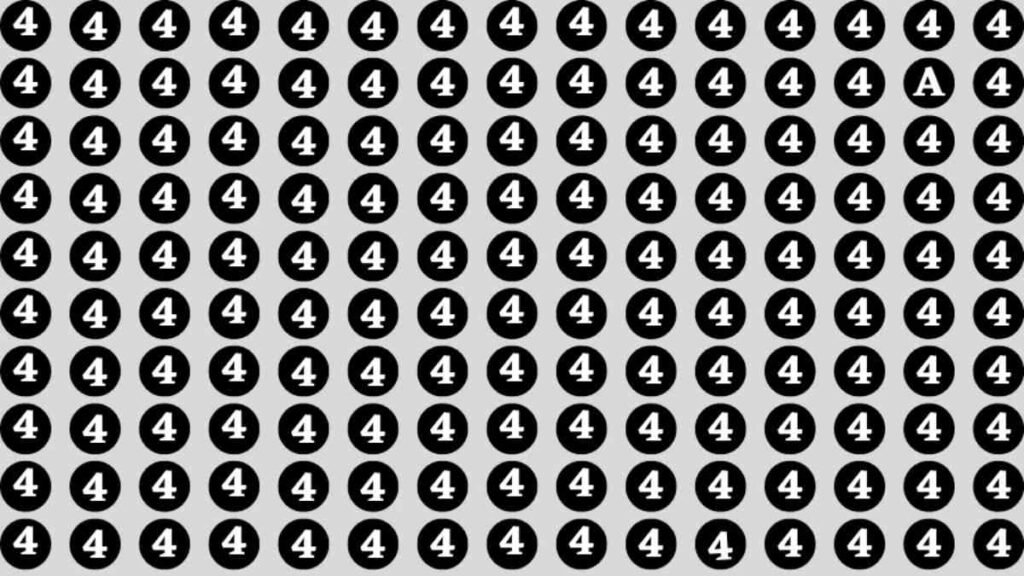Optical illusions have long fascinated humanity, challenging our perceptions and revealing the complex workings of the human mind.
Among the myriad of illusions that exist, the T among L test stands out as a unique and intriguing challenge.
This seemingly simple task of spotting the letter “T” among a sea of “L”s holds within it a wealth of insights into our cognitive processes and visual perception.
In this article, we will delve into the fascinating world of optical illusions, explore the science behind the T among L test, and provide strategies to enhance your observational skills.
Unraveling the Mystery of Optical Illusions

Optical illusions have captivated humans for centuries, with examples dating back to ancient civilizations.
These visual phenomena occur when our brains misinterpret sensory information, leading to perceptions that deviate from reality.
Despite our advanced understanding of the human brain and visual system, optical illusions continue to baffle and intrigue researchers and laypeople alike.
One of the most compelling aspects of optical illusions is their ability to deceive our senses effortlessly.
Even when we know we are being tricked, our brains often struggle to perceive the true nature of the illusion.
This highlights the complex interplay between perception, cognition, and sensory processing within the human brain.
The T among L Test: A Brief Introduction
The T among L test is a classic example of an optical illusion designed to challenge our observational skills.
The task is deceptively simple: participants are presented with a grid of letters, predominantly “L”s with a single “T” hidden among them.
The goal is to identify the lone “T” within a set time limit, typically ranging from a few seconds to a minute.
At first glance, the grid appears uniform, making it difficult to discern the hidden “T” amidst the sea of “L”s.
However, with focused attention and keen observational skills, individuals can train themselves to quickly locate the target letter within the allotted time frame.
The Science Behind the Illusion
To understand why the T among L test is so effective at confounding our perceptions, we must delve into the underlying science of visual processing.
Our brains rely on a complex network of neurons and cognitive processes to interpret the visual stimuli received from our eyes.
One key concept relevant to optical illusions is known as Gestalt principles. These principles describe how our brains organize visual information into meaningful patterns and structures.
In the case of the T among L test, the Gestalt principle of similarity plays a crucial role.
The uniformity of the “L” shapes creates a perceptual grouping that makes it challenging to distinguish the outlier “T.”
Furthermore, the phenomenon of visual search is also pertinent to understanding our performance on tasks like the T among L test.
Visual search refers to the process by which we scan our environment for specific targets or objects.
Factors such as target saliency, distractor similarity, and attentional focus influence how quickly and accurately we can identify a target amidst competing stimuli.
Enhancing Your Observational Skills
While the T among L test may initially seem daunting, there are several strategies you can employ to improve your performance and sharpen your observational skills:
Focus Your Attention: Concentrate your attention on scanning the grid systematically, rather than relying on haphazard searching.
By dividing the grid into smaller sections and scanning each one methodically, you can increase your chances of spotting the target letter.
Use Peripheral Vision: Our peripheral vision can pick up subtle cues that may go unnoticed when focusing solely on the central area of the grid.
Practice expanding your field of view to encompass more of the grid, allowing you to detect the target letter more efficiently.
Practice Regularly: Like any skill, observational abilities improve with practice.
Set aside time each day to engage in visual puzzles and challenges, gradually increasing the difficulty level as your skills improve.
Over time, you’ll notice a marked enhancement in your ability to spot the target letter quickly.
Stay Relaxed: Avoid succumbing to pressure or anxiety when faced with time constraints.
Tension and stress can impair cognitive function and hinder your ability to perform optimally.
Take deep breaths, stay calm, and approach the task with a clear and focused mindset.
Conclusion
The T among L test serves as a captivating demonstration of the intricate relationship between perception, cognition, and visual processing.
By challenging our ability to discern subtle differences within a complex visual scene, this optical illusion offers valuable insights into the workings of the human mind.
As you embark on the journey to master the T among L test, remember that observational skills are not fixed but can be cultivated and refined through practice and perseverance.
By employing the strategies outlined in this article and embracing the challenge with curiosity and determination, you’ll unlock the secrets of optical illusions and enhance your ability to perceive the world with newfound clarity.